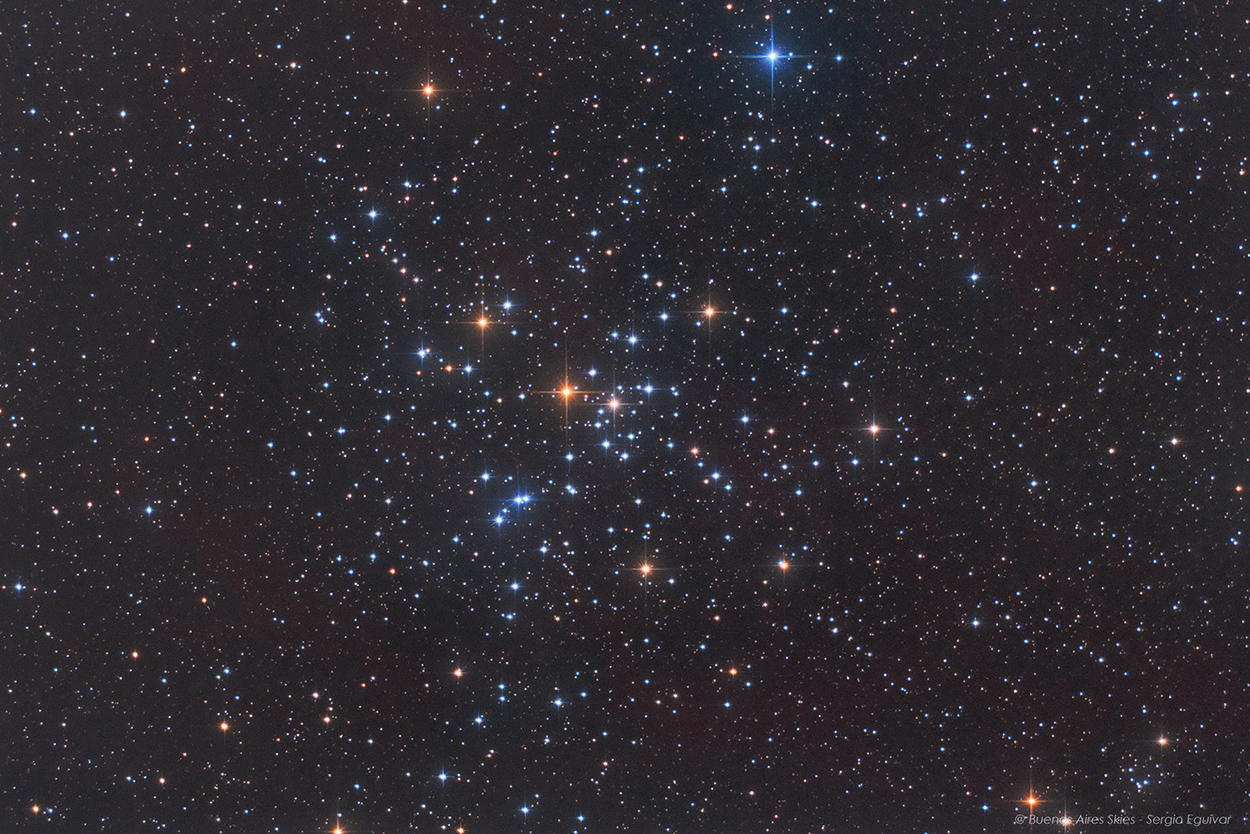
| HOME |
MESSIER 41
OPEN CLUSTER IN CANIS MAYOR
(Image centered at: ra 06 h:46 m / dec - 20º 44')
CLICK THE IMAGE FOR A HIGH RESOLUTION VIEW
November - 2023, Home Backyard in Martinez, Buenos Aires, Argentina
DATA
TYPE: Open Cluster
APPARENT DIAMETER: 38 arc minutes
APPARENT MAGNITUDE (V): 4.5
DISTANCE: 2,300 light years
IMAGE INFORMATION
INSTRUMENT: 6" ORION OPTICS UK (Ultra Grade Optics) w/Sky Watcher Coma Corrector (0.9x) working at at f4.5
CAMERA: QHY 183 MONO
MOUNT: VIXEN GDPX, OAG with Starlight Xpress Lodestar
FILTERS: BAADER LRGB Set
SKY CONDITIONS: urban skies - Bortle 8
EXPOSURES: LHaRGB (30,60,40,40,40)
OBJECT DESCRIPTION AND IMAGE SESSION
Sometimes referred as the "Little Beehive Cluster", Messier 41 is an inevitable target for any moderate size telescope form many enthusiast observers. However not so often imaged. It lies in the constellation of Canis Major and it was discovered by Giovanni Batista Hodierna before 1654 and was perhaps known to Aristotle about 325 BC. Covering an area equivalent as a full Moon, the cluster contains about 100 stars including several red giants and it spans for about 26 light years and it is moving away from us at 23,3 km per second. Messier 41 is estimated to be 190 million years old. Properties and dynamics suggest a total life expectancy of 500 million years, before it will have disintegrated The object is very easy to find. Just aim 4 degrees from Sirius to the South.